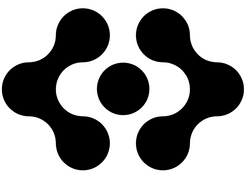Ether is a vital component of the Ethereum platform. Much like Bitcoin is a digital currency that can be spent and traded in any number of places, Ether is a form of currency. It is a kind of fuel, needed to operate the Dapps platform and is paid by platform clients to the machines that execute the operations. Put another way, it is the incentive that ensures quality applications are written and that the Ethereum network stays in good healthy shape. It can also be mined and traded in the same way as Bitcoin.
The limits of Ether and the rate at which it is issued at was decided at the 2014 presale, determined by the donations that were gathered. The results turned out at approximately:
60 million Ether was created to the presale contributors
20% of that number, approximately 12 million were created to the development fund with most of it being given to early developers and contributors with the rest to the Ethereum foundation
5 Ether are created for every block, around every 15 to 17 seconds, for the block miner
Occasionally 2 or 3 Ether are given to another miner if they can find a solution to the mathematical equation but their block was not included
The Ethereum founders say that Ether is not actually a currency, it is more of a crypto-fuel. In essence, it is a token that has a single primary use – that of paying for the platform. What this means is that you most likely will not be able to pay for goods online with Ether but it can still be traded and invested with the hopes of the price rising.
Is There an Infinite Supply of Ether?
No. At the 2014 presale, all parties agreed on a set of terms that cap the issue of Ether at 18 million per year or 25% of the initial supply. This means that, while the absolute issuance can’t be changed, the inflation will be decreased year on year and in theory, if this were kept to indefinitely then, at some time, the rate of tokens created each year would reach the average amount that is lost per year, through accidental loss of keys, misuse, etc. and an equilibrium would be reached.
However, it is not expected that this rate will be kept to; this year. Ethereum has gone from Proof of Work to a new algorithm that is just out of development. The consensus algorithm is called Casper and it is hoped it will prove more efficient and will require less in the way of mining subsidies. Right now, the way in which it will be issued and what function it will serve is still under research but what we can guarantee is that the current maximum will be a ceiling and the new issuance through Casper will be much less.
What Relationship Exists Between Ether and Bitcoin?
To be fair, Ether simply wouldn’t be possible if it weren’t for Bitcoin technology or the currency and it is not seen as competition. Rather it is a complementary currency in the blockchain ecosystem; Ether is the fuel that pays for the computations on the Ethereum network, it’s not intended for use as a currency, share, asset or anything like it.
Bitcoin can be used in Ethereum in several ways:
Bitcoin can be traded for Ether or ETH – there are several companies working on making this process seamless. If a user wanted, they could trade Bitcoin for ETH for executing Smart contracts and then trade it back straight away to maintain the value that is pegged and secured by Bitcoin.
As a Pegged Derivative – Ethereum is one of the best ways to create complex trading between several parties. If there is one Bitcoin source that is trusted by all parties, it would be possible to create a currency based on Ethereum with a value that is pegged to the Bitcoin market value. Bitcoin could then be traded to a token that is guaranteed to trade back always at the same amount while retaining compatibility with other Ethereum contracts and platforms.
Bitcoin could be used to convert a 2-way peg – this would involve a Bitcoin relay, a small piece of code that allows Bitcoin to be side chained to Ethereum. This way, Bitcoin’s native but limited capability for scripting can be used for locking Bitcoin into a contract that has a direct connection to an Ethereum contract. This can then issue a token that is Ethereum-based and is guaranteed a backing by Bitcoin.
How to Buy Ether (ETH):
Although it isn’t as popular as Bitcoin yet, there are a few ways to get hold of ETH, maybe not always easily but you can choose from one of these three methods:
Using Fiat Currency
For those that don’t know, fiat currency is simply the name given to the physical cash that you hold. There are several exchanges that will take fiat currency in exchange for ETH, usually with Euros, Dollars or British pounds. Check out which exchanges take the currency you use and set up your account. You will need to verify your identity and you may be asked to link a credit card as well as a bank account, purely for security.
Using Bitcoin
If you can’t find an exchange that trades in your currency or you think that the ask spread is a little too high, another way to do it is to buy Bitcoin first and then use that to buy the ETH. Pick a good Bitcoin exchange, set up your account and buy your Bitcoin. Again, you will need to verify your bank and identity for the initial setup. To turn that Bitcoin into ETH, go to an exchange that operates a BTC-ETH pair.
By Mining
You can get involved in mining ETH, either by investing in the equipment needed or by joining a mining pool. One option is a cloud mining contract but do make sure you research them first and choose the best one. If you buy a cloud mining contract, a small amount of your profit goes to the owner of the contract for the maintenance, management and the set-up costs. With a mining pool, your profit is smaller but you have a higher chance of success.
In the next chapter, we are going to look closer at Ethereum mining.

































